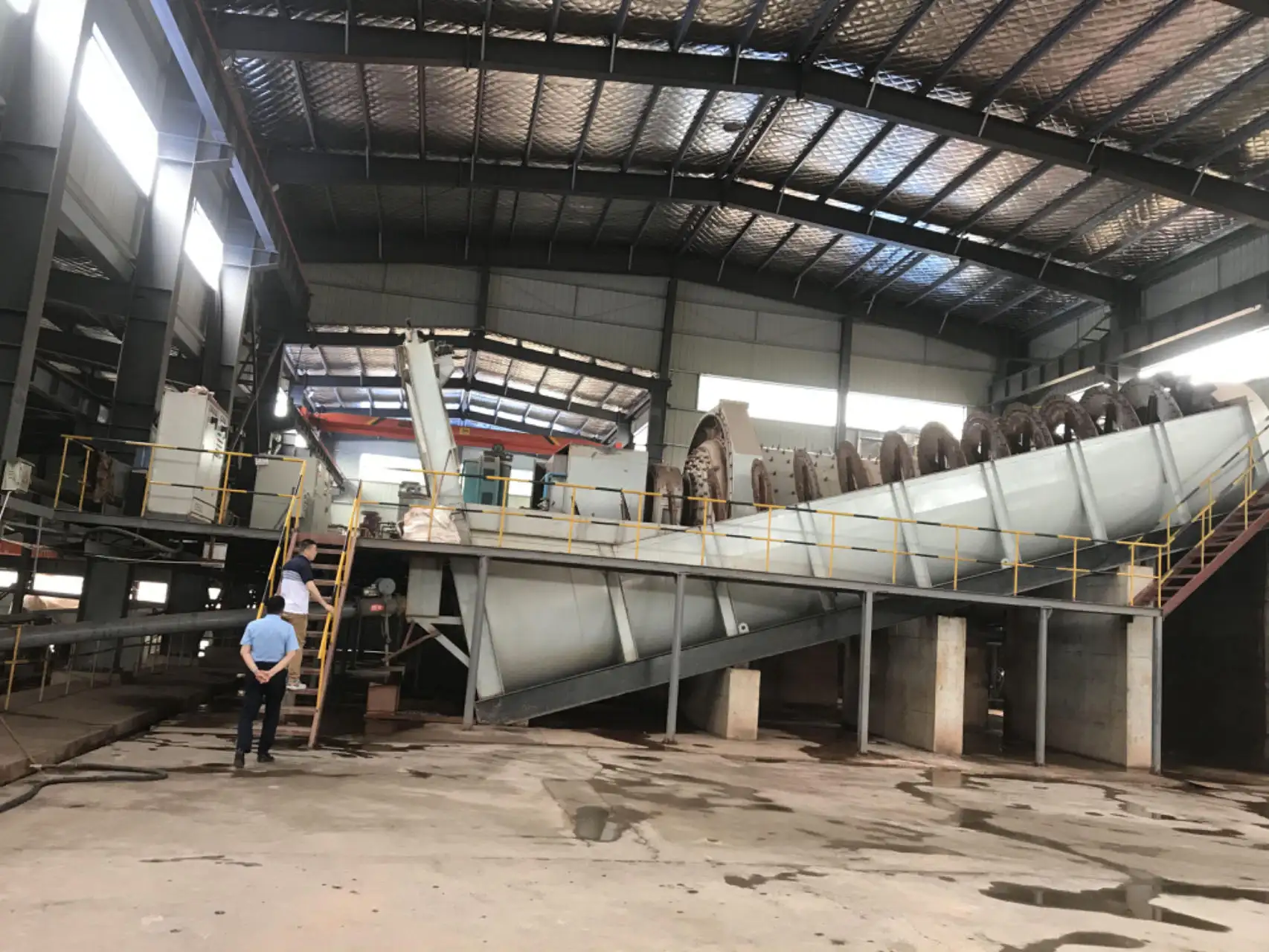We conducted mineral processing tests for Chinese gold mining companies. Based on the test results, we designed a gravity-flotation combined mineral processing process for them. In addition, we also designed a tailings dehydration (tailings dry discharge) process for the concentrator. The concentrator processes 2,000 tons of gold ore every day.
Crushing and screening
The crushing and screening stage adopts a two-stage one-closed-circuit crushing and screening process. The raw ore is stored in the raw ore yard and is loaded by a shovel. A trough feeder is installed at the bottom of the raw ore bin, which is fed into the 1# belt conveyor and transported to the jaw crusher for coarse crushing. The coarse crushed products are hand-selected on the 2# belt conveyor, and the waste rock is directly discarded; the hand-selected materials are then transported by the 3# belt conveyor to the circular vibrating screen for screening, and the screened materials (+13.5mm) are transported by the 4# belt conveyor to the cone crusher for fine crushing. The fine crushed products and the hand-selected materials are returned to the vibrating screen together to form a closed-circuit crushing. The underscreen materials (-13.5mm) are qualified materials in the crushing stage and are transported to the powder ore bin by the 5# belt conveyor.
Grinding and separation
The process adopts a closed-circuit grinding + gravity separation + flotation (one roughing, two sweeping, and two fine separations). An electric vibrating feeder is installed at the bottom of the powder silo, which is fed into the 6# belt conveyor to be transported to the straight-cylinder ball mill for grinding. A cylindrical screen is installed at the discharge end, and the large particles on the screen are transported back to the ball mill by the 7# belt conveyor; the slurry under the screen is pumped into the water-jacketed centrifugal concentrator for gravity separation, and the concentrate flows into the 6-S shaking table for gravity separation. The concentrated concentrate is the gravity-separated gold concentrate, and the selected tailings are returned to the ball mill; the centrifuge tailings are pumped into the hydrocyclone for classification, and the bottom flow is returned to the ball mill for re-grinding, forming a closed-circuit grinding process, and the grinding fineness is -200 mesh, accounting for 80%.
The overflow of the hydrocyclone flows by gravity to the high-efficiency stirring tank for adding chemicals and slurry mixing, and then flows by gravity to the SF-2.8 flotation machine for roughing. The roughing foam product flows by gravity to the SF-2.8 flotation machine for two-stage fine cleaning (2/2). After two-stage fine cleaning, the flotation gold concentrate is obtained. The products in the fine I and fine II tanks are returned to the previous operation in turn; the products in the roughing tank flow to two scavenging operations. Both scavenging flotation machines are SF-2.8 flotation machines. The scavenging I and scavenging II foam products are also returned to the previous operation in turn. The scavenging II tailings are the final flotation tailings.
Tailings dehydration
Flotation tailings are dry-discharged by dehydration hydrocyclone + dehydration screen + concentrator + filter press. The tailings slurry is pumped into the dewatering cyclone, and the bottom flow of the cyclone flows by gravity to the dewatering screen; the overflow enters the high-efficiency multi-cone thickener for concentration, and the bottom flow of the thickener is pumped into the filter press by a slurry pump for filtration. The filter cake and the material on the dewatering screen are all dry tailings, which are transported to the tailings storage site by the 9# belt conveyor for storage. The water under the screen is pumped back to the thickener; the filtrate and the overflow of the thickener can flow into the recycle pool by gravity and then return to production for use.









